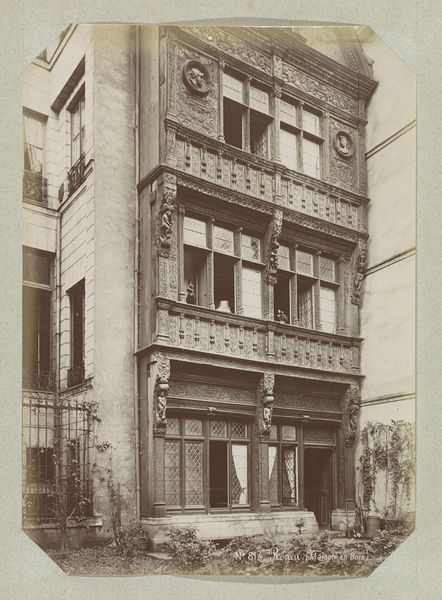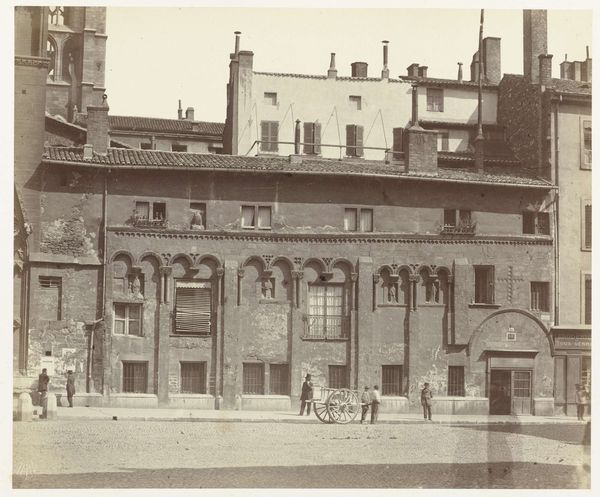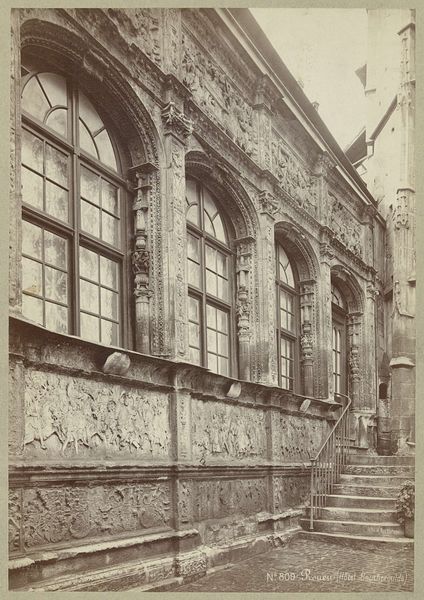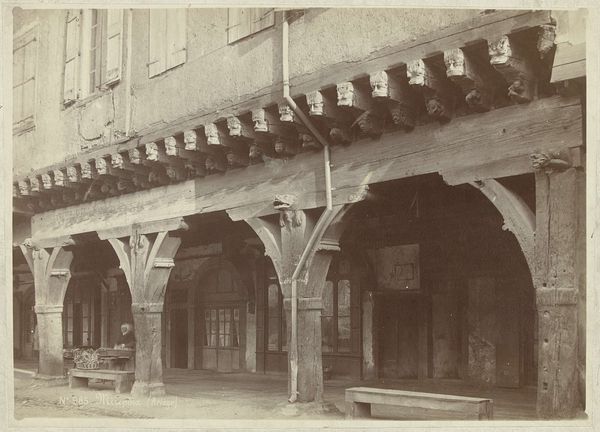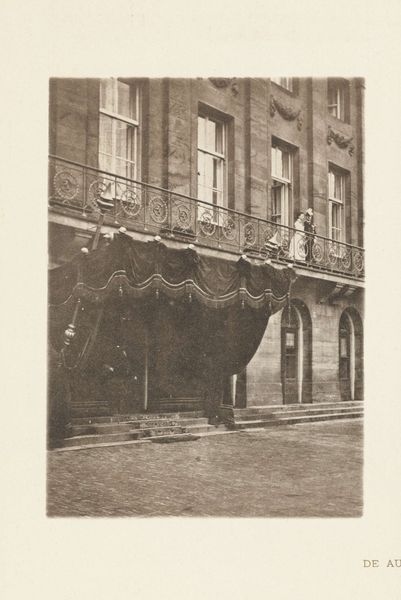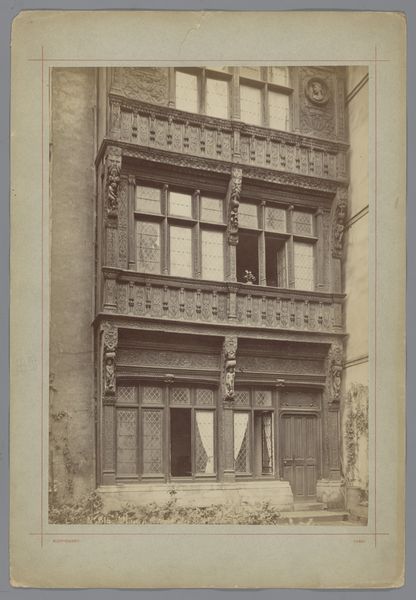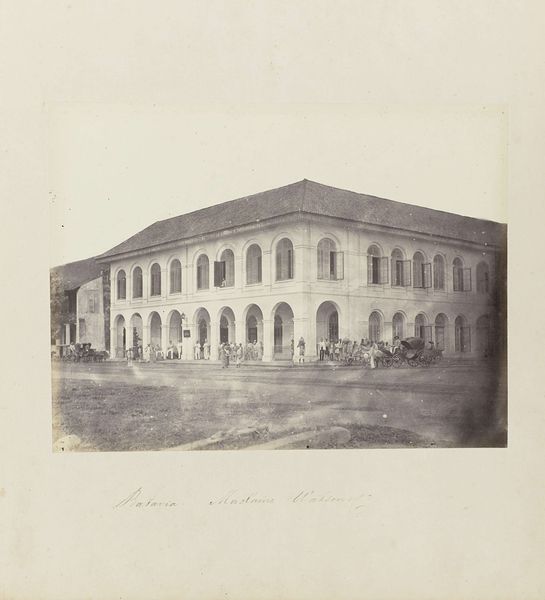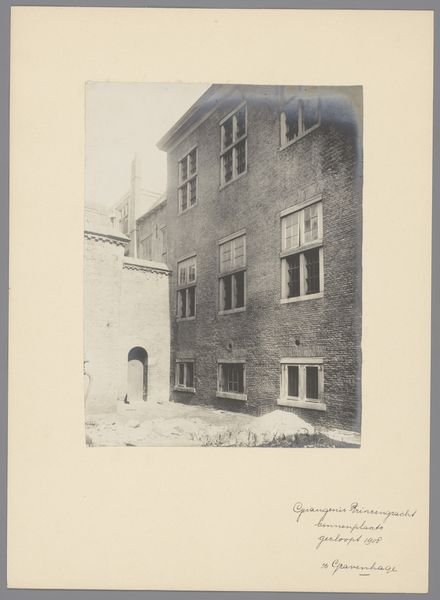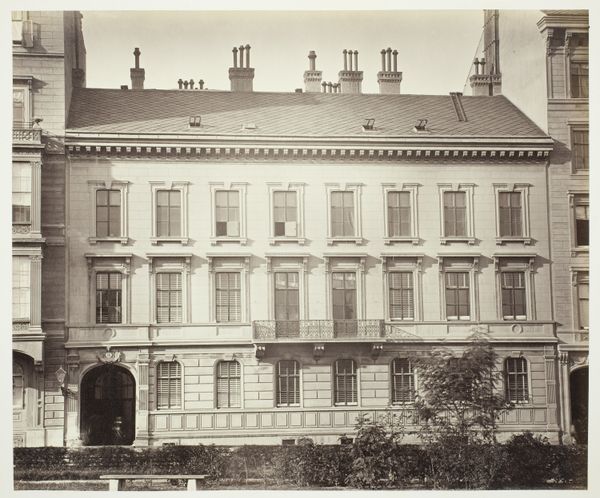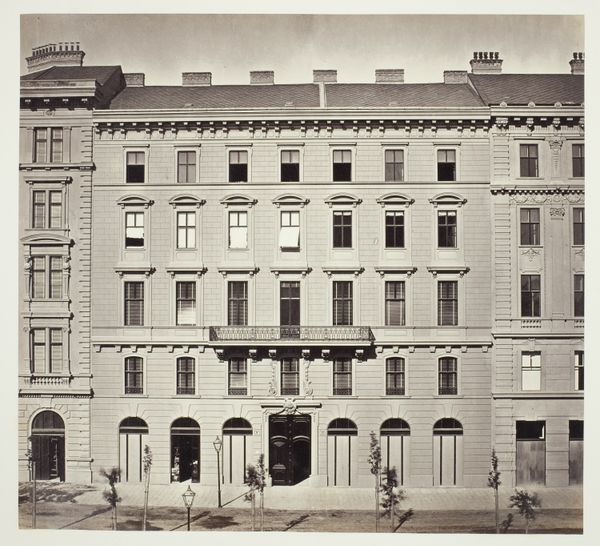
#
amateur sketch
#
aged paper
#
toned paper
#
light pencil work
#
photo restoration
#
pencil sketch
#
charcoal drawing
#
charcoal art
#
paper medium
#
watercolor
Dimensions: height 379 mm, width 270 mm, height 411 mm, width 314 mm
Copyright: Rijks Museum: Open Domain
Curator: This photograph, titled "Romeins huis in Saint-Gilles-du-Gard," was captured by Médéric Mieusement sometime between 1870 and 1890. Editor: What strikes me immediately is the aged quality of the paper; it gives the building such a feeling of timeless solidity, doesn't it? Like it has always been and always will be right there. Curator: Yes, the toned paper is a tangible link to the past. Mieusement’s choice of a photographic process using paper as its primary medium highlights the deliberate material processes of documenting architecture, moving away from painting and into mass reproduction and a modern labor of representation. Editor: It almost feels like you could reach out and touch the very stone! It makes me wonder, what sort of lives played out behind those dark doors? What were the sounds echoing in those hallways? Were there grand celebrations or quiet family meals taking place there? Curator: Perhaps understanding the social and historical context in which Mieusement created this work, particularly the burgeoning field of architectural preservation and the use of photography as a tool for documentation and analysis, provides us with a more precise view of its intended usage. This isn't simply about nostalgia; it is more about inventory. Editor: Perhaps, but there's such a fine line. Isn’t it funny how the act of trying to capture and document things invariably makes them all the more beautiful and elusive, charged with nostalgia even if unintended? The material reality interacts with the artist to create unintended expressions. Curator: Indeed. Thinking about the labor involved in its production and circulation – the preparation of the photographic materials, the physical act of taking the photo, and the distribution of prints highlights its departure from traditional forms of artistic creation. Editor: Still, the mystery of the people who lived within those walls—their voices and dreams—infuses this image, and even for an academic photo it creates a hauntingly beautiful echo through time, even through its materiality and context. It is more evocative to me, and less clinical. Curator: A fair assessment. Its materiality creates a feeling beyond the clinical, you’re correct. Editor: Absolutely, it makes one consider the convergence of history and the artistic medium. Thanks for this enlightening talk.
Comments
No comments
Be the first to comment and join the conversation on the ultimate creative platform.
